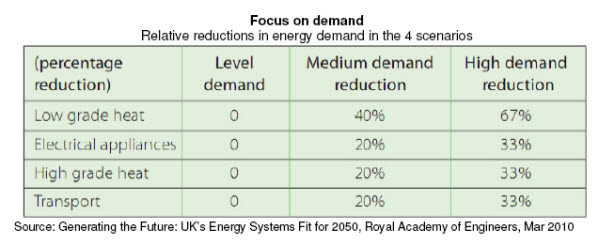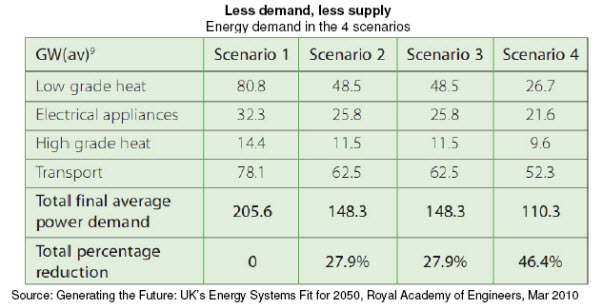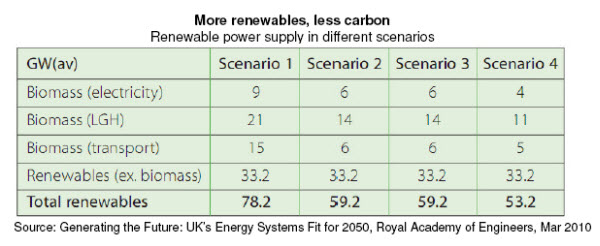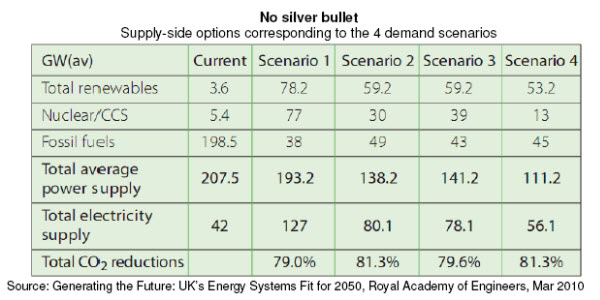This is a sample article from the May 2010 issue of EEnergy Informer.
Future demand is no longer necessarily growing, nor taken as a given
While reducing the carbon content of the supply-side is broadly accepted as a prudent strategy, more focus in being paid to the demand-side including efficient utilization of energy and, increasingly, behavioral and lifestyle changes. This may sound trivial, but it represents a sea change in thinking. If less energy is required due to more efficient utilization and behavioral changes, then less energy need to be supplied, with considerable cost, economic, energy security and environmental implications.

Echoing this theme, a report released by UK’s Royal Academy of Engineers in March examines 4 future scenarios, all focused almost exclusively on the demand-side of the energy supply and demand. Generating the Future: UK’s Energy Systems Fit for 2050, prepared in response to the Climate Change Act that became law in Nov 2008, seeks to reduce UK’s greenhouse gas emissions 80% by 2050. This much is not new, but what is new is the novel approach taken on how to meet the target. Instead of asking how to reduce the carbon content of supply-side options while allowing energy demand to rise, the report asks what can be done to get by with less energy?

The study examines 4 future energy scenarios. The first assumes an essentially flat demand through 2050 — which requires significant adjustments in how energy is utilized throughout the economy. Scenarios 2 and 3 examine lowering demand moderately — by 28% — over time through electrification of transportation sector and low-grade heat. Scenario 4 assumes a significant reduction in energy demand over time — by 46%.

The supply-side options follow once the adjustments on the demand side are taken into account with corresponding reductions in CO2 emissions. In all four cases, the reliance on electric power sector increases, with much more coming from low carbon sources including renewable resources, nuclear and carbon capture and sequestration.
The study’s main conclusions, while not earthshaking, are sensible and consistent with similar studies of how to achieve significant reductions in carbon emissions over time:
- There is no single silver bullet that will achieve an 80% cut in carbon emissions — suggesting that “fundamental restructuring of the whole of the UK’s energy system will be unavoidable;”
- Significant “demand reductions across all sectors of the economy will be essential through a combination of increased efficiencies and behavioral change;”
- “The full suite of low-carbon energy supply options … will be needed … in a balanced way;” and not surprisingly;
- “The scale of engineering challenge is massive.”
The lucid 21-page report is a relatively easy read with technical details and assumptions in appendices. The most refreshing aspect of the study is its focus on what needs to be done on the demand side before turning attention on the supply-side options.

For too long, the engineering-dominated power sector has been resigned to take customer demand as a given and take continuous demand growth for granted. The era of ever-rising supplies matching growing demand at falling prices have passed. We must learn not to take demand as a given, nor to assume continued demand growth as has been the case in the past. The Royal Academy of Engineers deserves recognition for taking a gigantic leap to a future where demand is no longer growing, nor is taken as a given.

